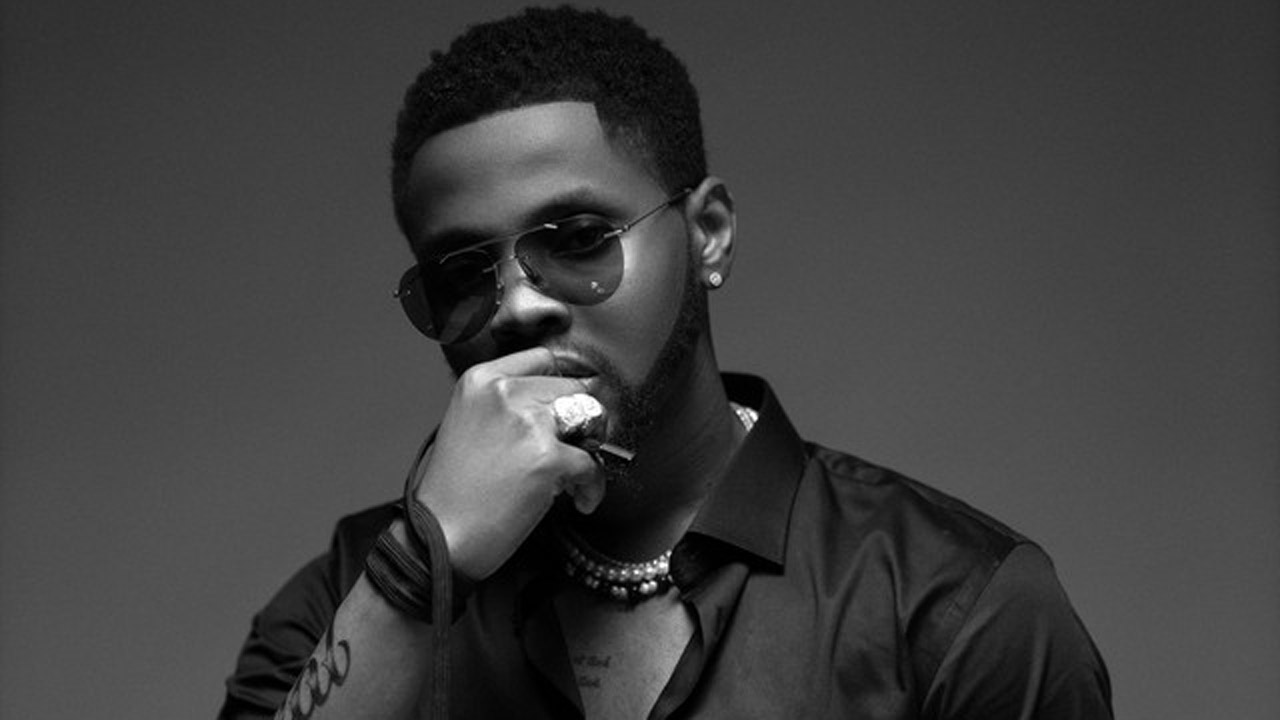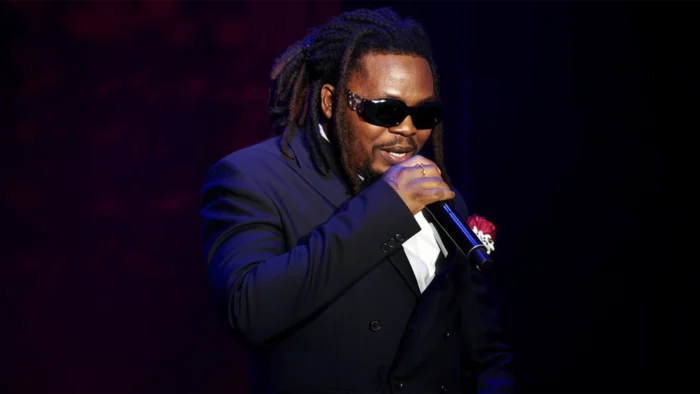15-year-old Kanyeyachukwu Tagbo-Okeke was diagnosed with autism at a young age. Now, through his determination and resilience, he has shattered the Guinness World Record for the Largest Painting and unveiled the world’s largest art canvas by an individual, proving that impossibility truly is a myth.
Born with no visible signs of difference, Kanyeyachukwu Tagbo-Okeke’s early childhood seemed typical. However, life took an unexpected turn when, at just two years old, signs began to emerge that something was amiss.
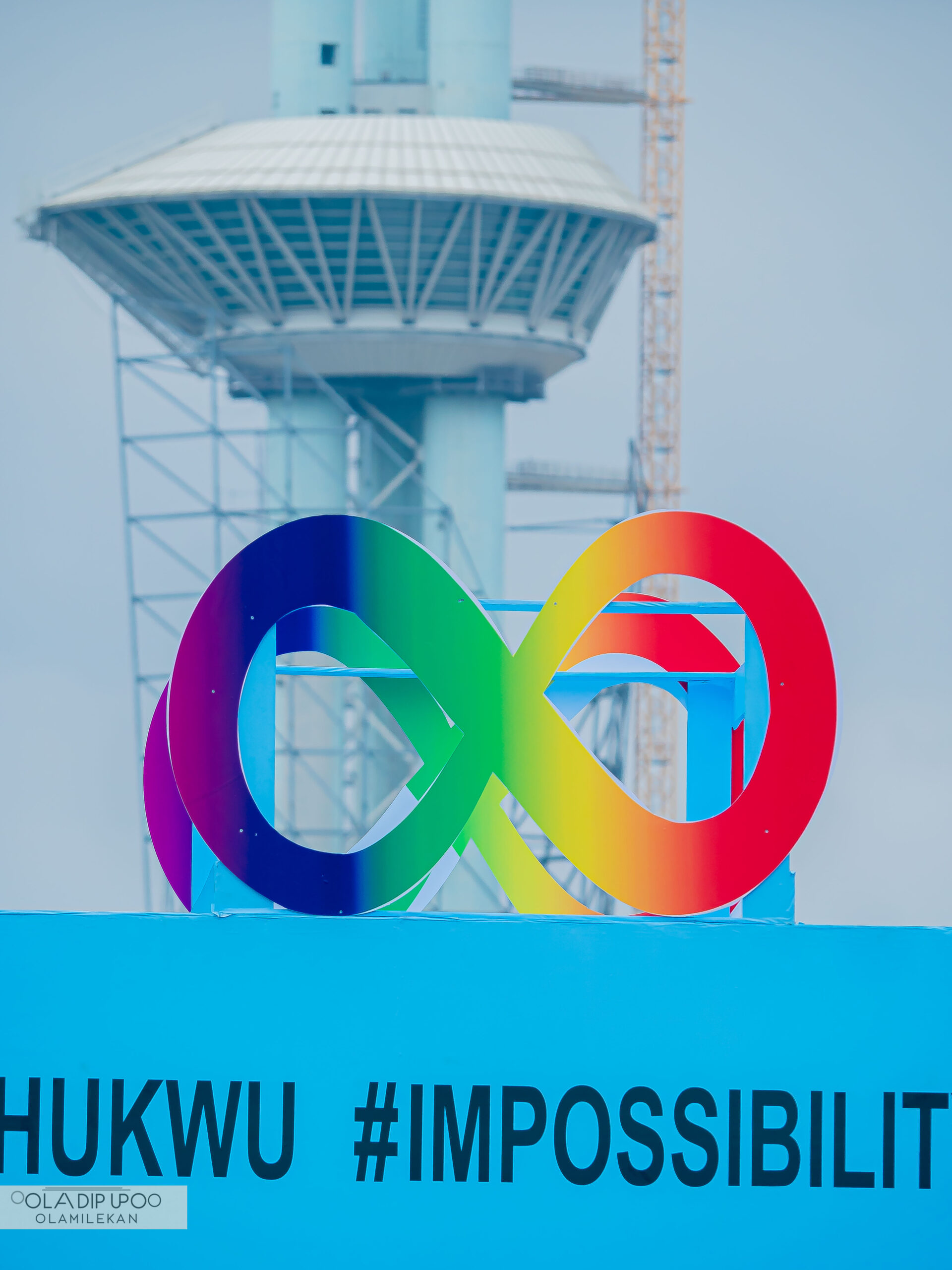
“Kanye was born completely normal to us. There were no signs of any incapacities in any way,” his father, Tagbo Okeke, told Guardian Life. “It wasn’t until he turned two that we began to notice delays in his speech and mobility, and there was this endless irritable feeling he seemed to have.”
This marked the beginning of a challenging journey filled with uncertainty, confusion, and eventually hope.
Kanye’s parents were initially unaware of his condition until a fortuitous visit to his grandmother in Lagos. It was she who insisted he needed professional help.
READ ALSO: World Autism Day: What every Nigerian should know
“This led us to so many hospital visits where we were told again and again that he was fine and his progress was only slow because of several other reasons that would clear out in due time, but no one spoke to us about ‘autism,’” Tagbo explained.
“Out of desperation and totally confused by this time, we took him to Canada, and it was there, at the very first doctor’s appointment, that he was diagnosed with ADHD and autism. It was very traumatic for us in many ways,” his father continued.
It took 10 months, five different consultants, and at least three prominent hospitals before the family received a proper diagnosis.
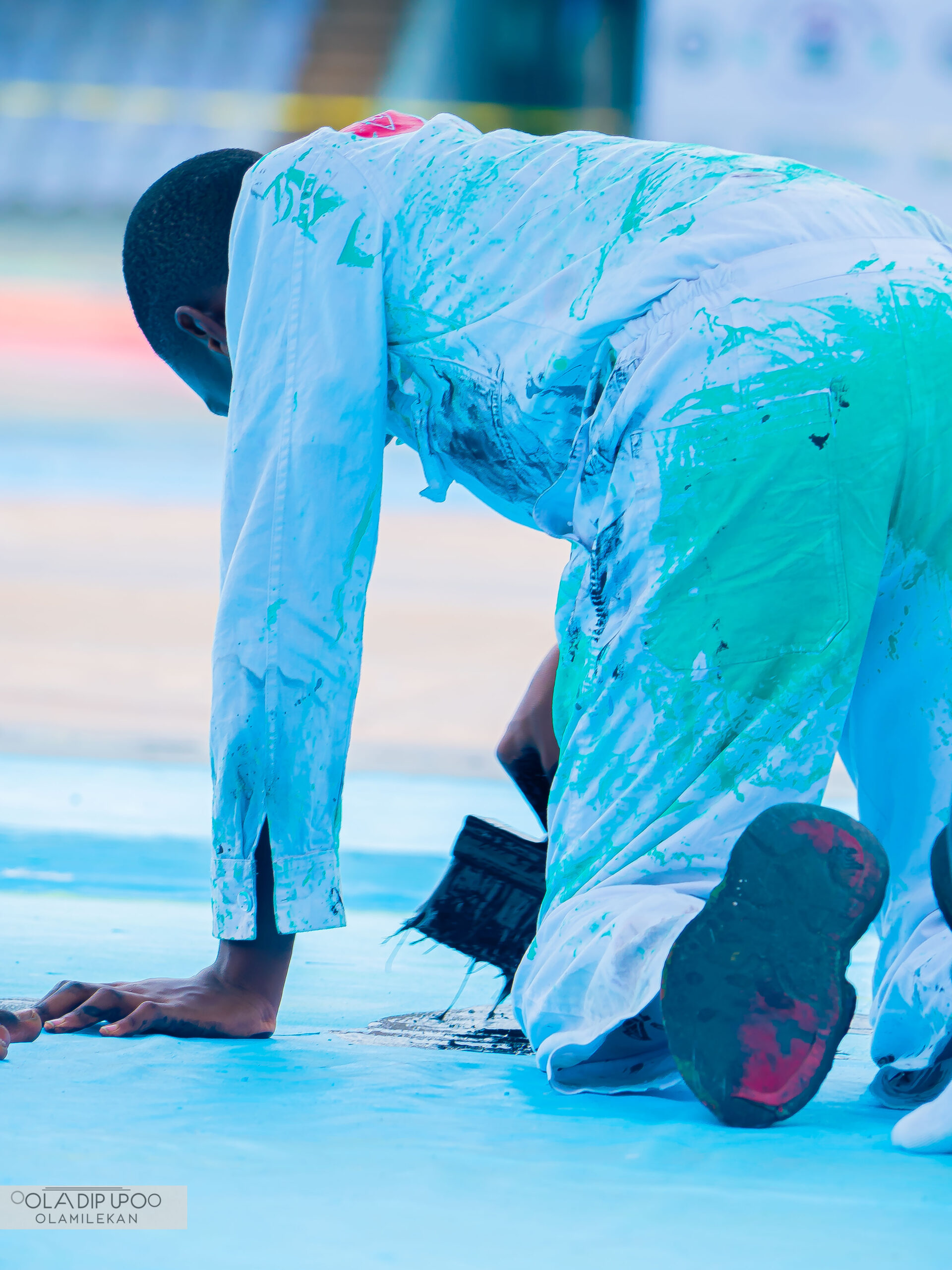
Exact figures on autism prevalence in Nigeria are difficult to determine. However, studies indicate an estimated prevalence of around 2.3%, suggesting that hundreds of thousands of children in Nigeria may be affected by autism.
Cultural and social stigmas often delay diagnosis, which can have far-reaching impacts on families.
“The time, energy, and resources expended during this period were enormous, but that wasn’t as painful as knowing that if we had gotten him diagnosed earlier, he would have been exposed to much-needed therapy earlier, and this would have made a whole lot of difference,” Tagbo told Guardian Life.
Severely autistic and non-verbal, Kanye, with familial support, found his voice in a different form of self-expression, investing his energy and time in painting.
Unlike Kanye, however, thousands of autistic children in the country live daily lives replete with stigmatisation due to limited awareness. Many Nigerian parents conceal their children at home, fearing social stigma and discrimination. Individuals with autism are often mislabelled with derogatory terms such as ‘retarded,’ ‘dumb,’ or ‘deaf’. This lack of understanding also leads some mothers to seek spiritual healing, sometimes with fatal consequences for their children with ASD.
“Many individuals still believe that kids living with autism or adults with this spectrum can’t engage in extracurricular activities as much as other kids,” said Chiamaka Osochi Unagha, a special needs therapist based in Lagos. “They assume these children are not capable of reading, writing, speaking, being loved, or making friends. But none of these are true. Many of these assumptions stem from encounters with some autistic individuals who were not guided early enough to do these things in their own way.”
Despite these challenges, Kanye’s family’s support continually helped Kanye overcome barriers.
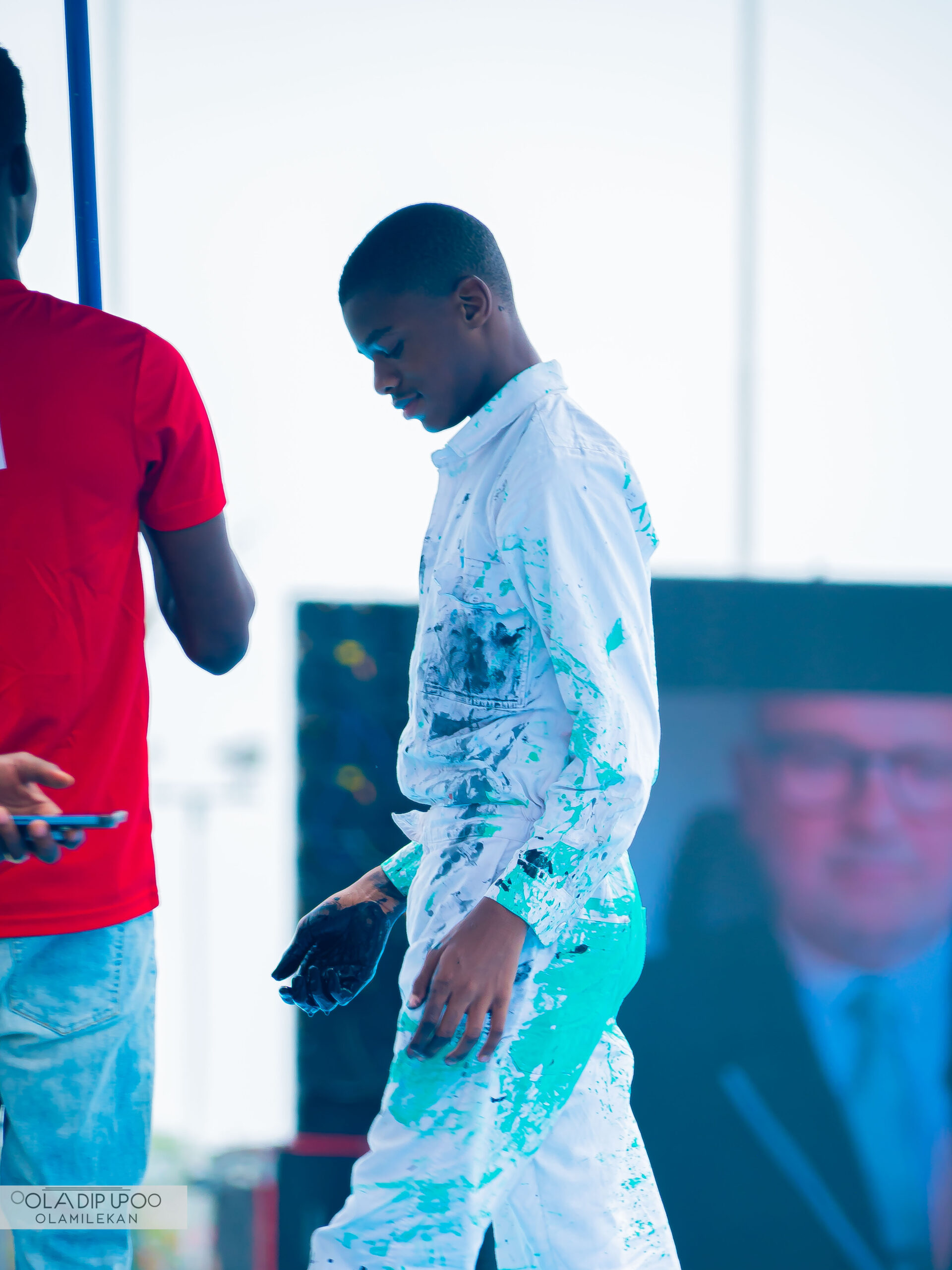
Art: A new language
For Kanye, art became a profound tool for communication and emotional expression. His parents noticed a transformative shift when he engaged with art. At the age of eight, he exhibited at Vienna’s MOYA Museum and became the youngest recipient of the Flame of Peace Art Award.
“Art makes him calm and happy. You can see him smiling and laughing as he mixes colours and applies them on his canvas,” his father explained.
READ ALSO: 5 things NOT to say to parents of autistic children
It quickly became clear that art gave Kanye structure and freedom simultaneously. As his primary means of emotional release and social connection, painting helped him express himself in ways traditional communication could not.
Remarkably, art allowed Kanye to transcend the limitations of verbal communication typically associated with autism, bridging a crucial communication gap for him. “People living with autism hardly maintain eye contact,” Tagbo explained. “But when people come to watch him paint, attend his exhibitions, and view his pieces, he is able to look back at them as if to say, ‘What do you think?’”

Overcoming daily challenges
Kanye is aware of his limitations. But instead of wallowing in regrets, he is using them to drive his talent as an artist and push the boundaries of self-expression and identity as an individual.
“To daily defy the odds as a kid living with autism, fulfilling God’s plan for my life as he has painted my heart with colours; to forever be an inspiration to other children living with autism as a contemporary abstract artist extraordinaire, I define Autism, it doesn’t define me,” reads a message on his website, where he celebrates his achievement. This powerful statement greets visitors who open the site, sitting just below his name.
Each artistic endeavour brought unique hurdles, not only for him but also for his supportive family. “The challenge is more for us, his parents and caregivers, who have to be ready with paint and a brush once he starts a new project,” his father admitted. To manage Kanye’s intense artistic sessions, his parents developed careful strategies, sometimes even hiding painting materials to ensure he took necessary breaks.
Unagha provided further insight, explaining that sensory overloads are common, so it is important to create a calm and controlled environment. “Patience and understanding,” she stressed, “are critical in managing moods and ensuring the child can maintain focus and productivity.”
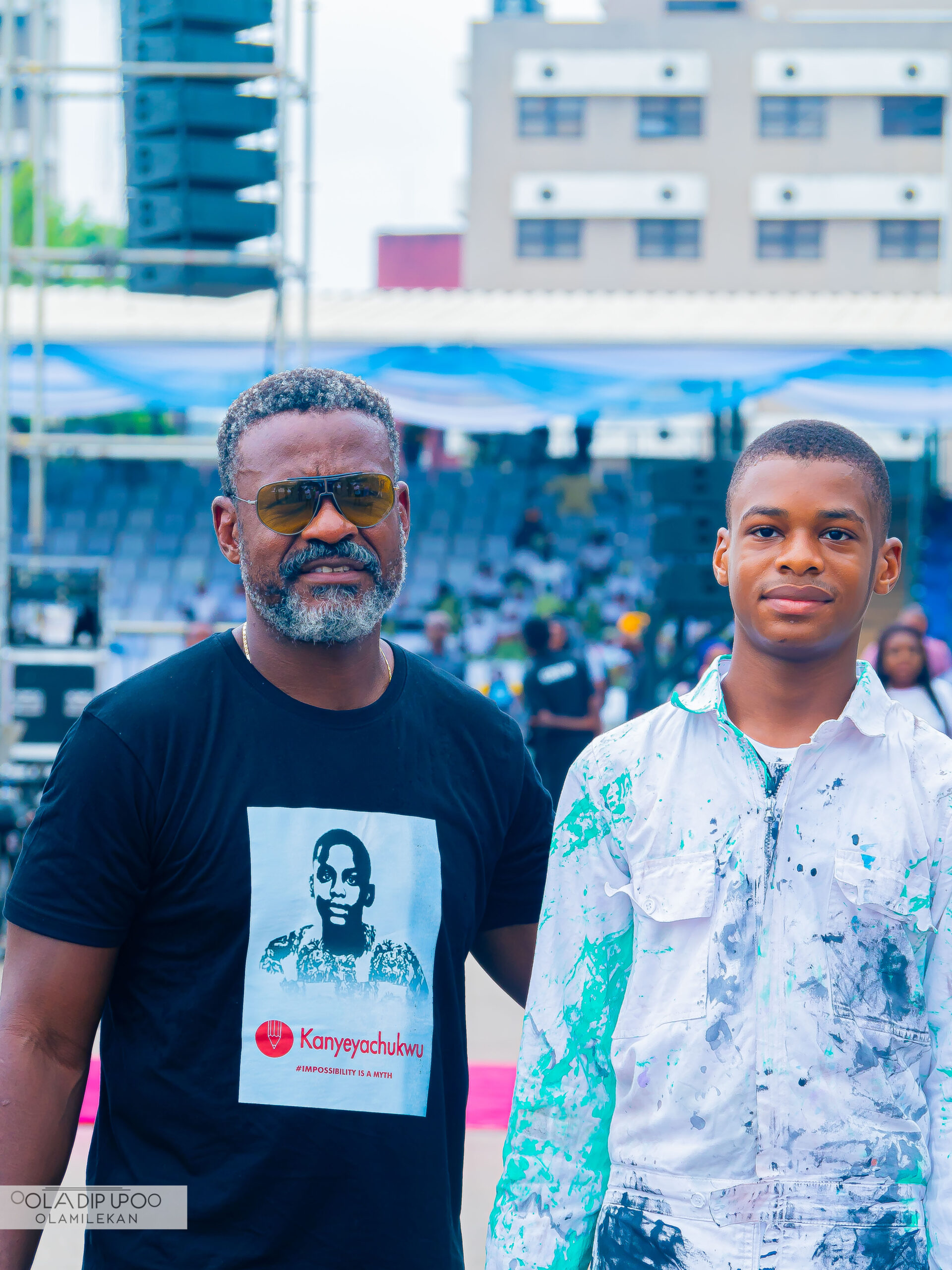
Creating a breathtaking masterpiece
Inspired by Kanye’s profound emotional expressions in previous works, his masterpiece, the 12,303 square metre canvas titled “Impossibility is a Myth,” has become a global symbol for autism awareness.
READ ALSO: 5 books about Autism for kids and parents
The 15-year-old prodigy shattered the Guinness World Record for the Largest Painting, unveiling the world’s largest art canvas by an individual at Eagle Square, Abuja. The painting was created using acrylic paint on an expansive canvas over a 12-week period.
“His previous works, in which he constantly expresses his emotions using faces, inspired this piece. The infinity sign at the centre is dedicated to people living with autism all over the world.”
The ambitious idea was first proposed by Kanye’s mother, who believed in her son’s capability. His father recalls her saying, “Kanye paints on large canvases and does it effortlessly; this would be a walk in the park for him and would attract necessary worldwide attention for children living with special needs.”
Years before, the couple had decided for one of them to take a step back from their job to properly care for Kanye. “At that time, we were scared of leaving him with just anyone, and so his mother decided to leave her job to cater for him full-time.”
Now, plans are underway for a national and international tour, along with educational and advocacy programmes to promote awareness about autism, inclusion, and the transformative power of the arts.
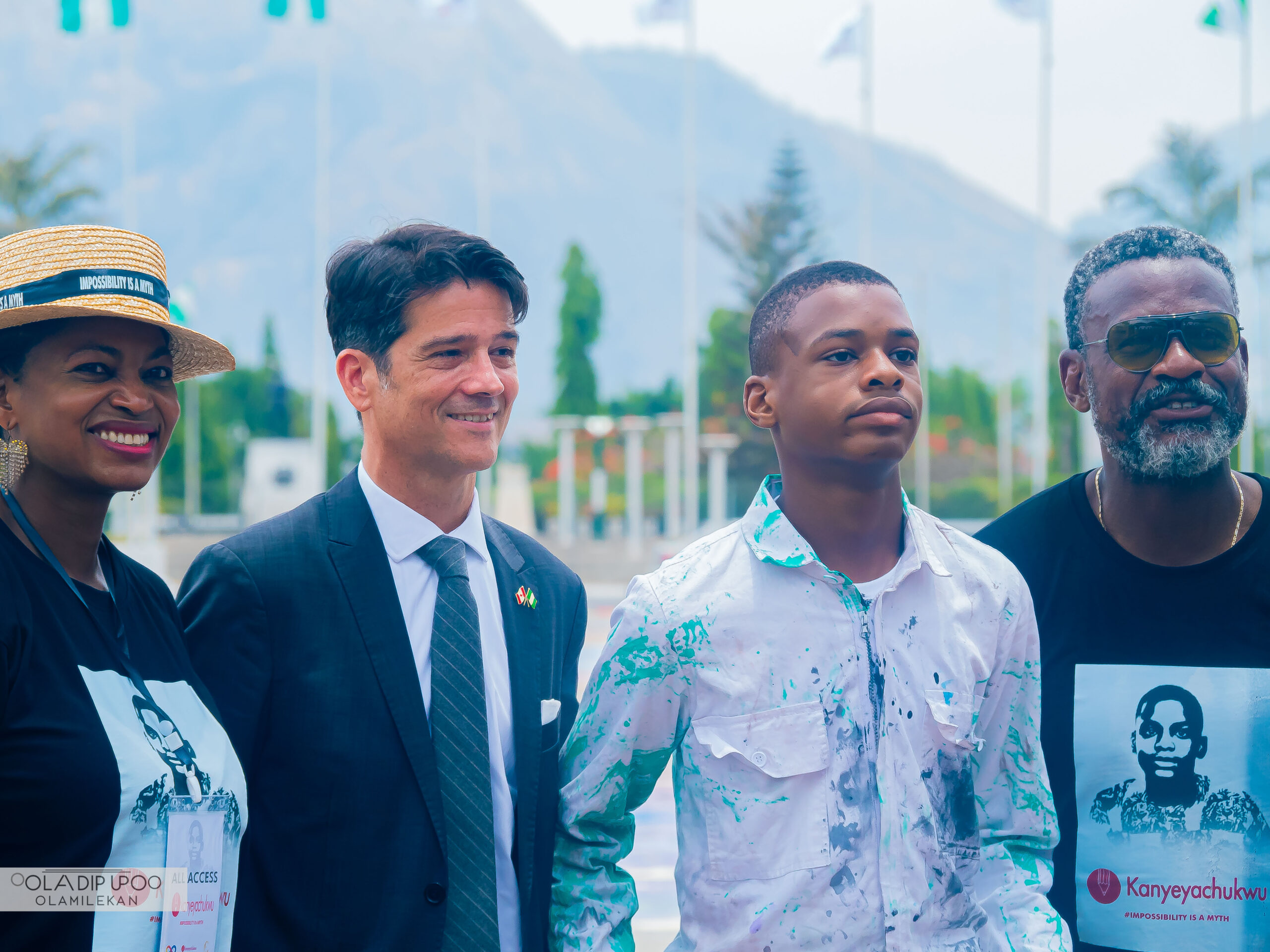
A day on the canvas
Creating this monumental artwork required immense dedication. “Working on this piece was very taxing mentally, as Kanye spent several hours each day painting, always with his mum right beside him,” his father explained to Guardian Life. Daily routines are intensive, balancing meticulous planning with spontaneous creativity.
“Sometimes he likes to work alone, but this couldn’t always happen since he was working from school,” his father described. “There were days when he would have his meltdowns, sensory overloads, and refuse to paint. We would have to patiently wait for him to get out of his mood.”
Yet the joy in the process remained evident, particularly when visitors came to observe him paint. “We had music playing, art lovers and people fascinated by the sheer magnitude of this work coming to watch him, and Kanye liked that sometimes.”
Giving back through KAS Autism
Kanye’s journey is as much about giving back as it is about personal triumph. His foundation, KAS Autism, has significantly impacted the lives of many autistic children in Nigeria.
His father explained, “KAS Autism works with several NGOs concerned with children living with autism in Nigeria and pays for therapy, art supplies, and medical care for less privileged kids living on the spectrum.” A percentage of the proceeds directly funds these critical initiatives, creating a tangible impact in the autism community.
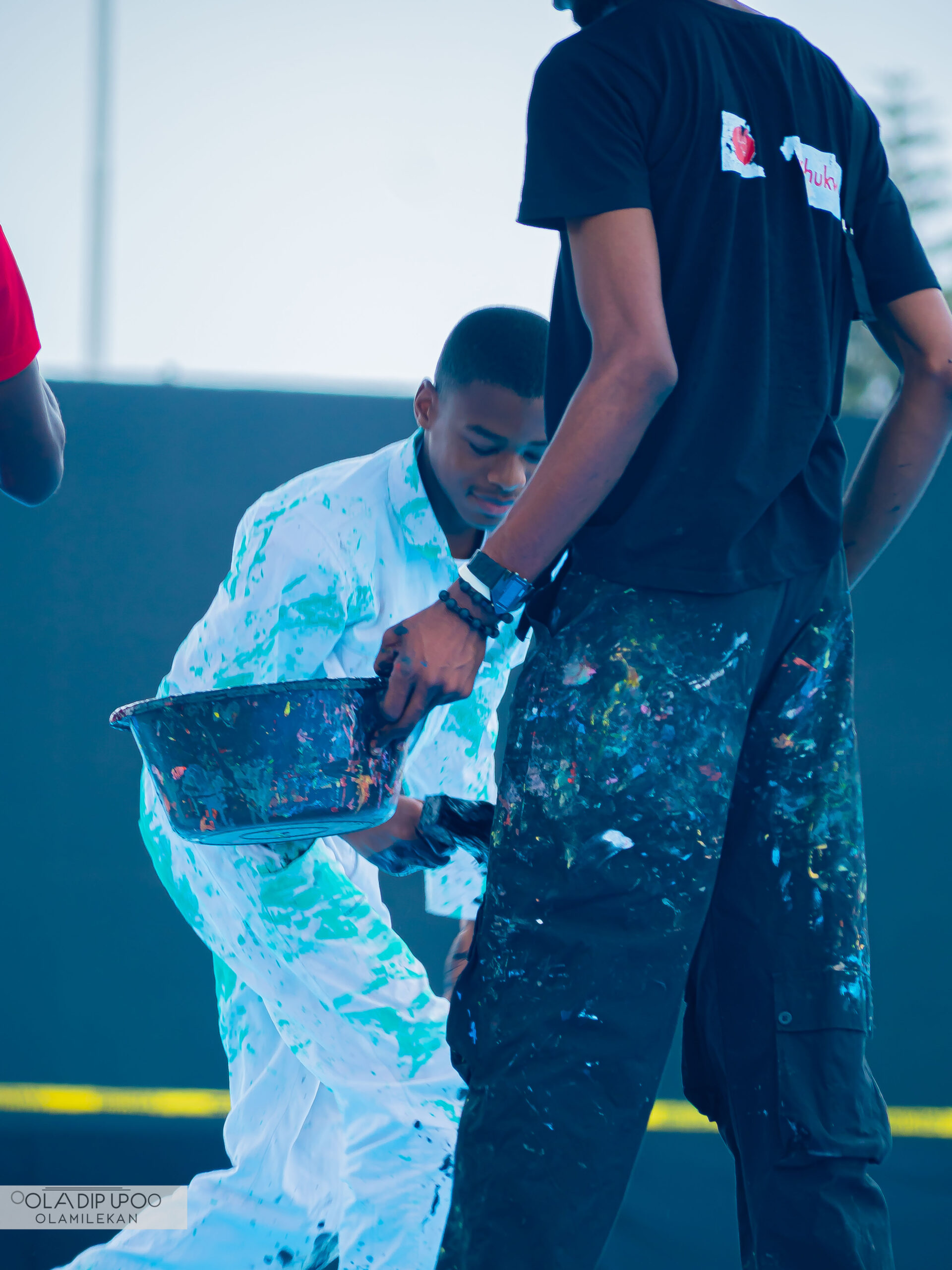
Reflecting on Kanye’s extraordinary journey from a challenging diagnosis to international acclaim, his parents expressed profound pride. “We are extremely proud of Kanye — how he carries himself at exhibitions, his exceptional skill, and the fact that he’s not stopping. Through his art, we’ve discovered immense talent among many kids living with autism.”
Now, particularly following the Guinness World Records attempt and subsequent recognition on World Autism Day on April 2nd, 2025, at Eagle Square, Kanye has become a powerful advocate, inspiring countless others by demonstrating that autism is not a limitation but a unique lens through which extraordinary talent can flourish.”

READ ALSO: No Child Left Behind: Kanye’s call for inclusion of children living with Autism
Kanye’s journey symbolises resilience, transforming perceived barriers into boundless opportunities. His family’s enduring support, coupled with his remarkable talent, has helped reshape narratives around autism, proving that impossibility truly is a myth.
“Don’t let your child’s diagnosis wear you down or cause you to lose your identity,” Unagha advises. “Advocate for your child, embrace the condition, and find networks of support. Educate others because advocacy starts with parents.”



